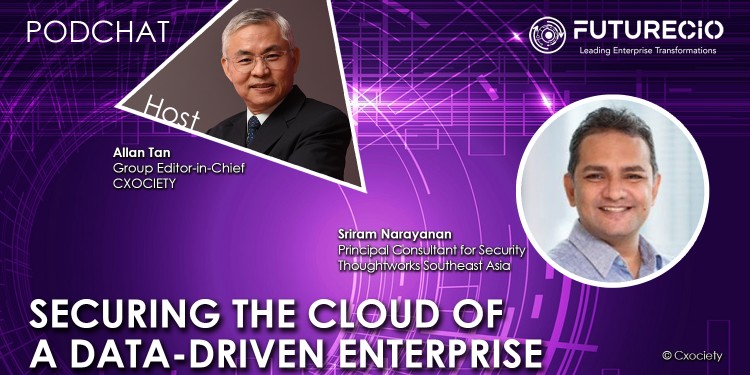With hybrid cloud the direction enterprises in Asia are taking, issues around security rise above the discussion as organisations mix and match on-premises, public and private IT operations in a bid to find the sweet spot for their computing needs.
On another topic, an Accenture study revealed a direct correlation between high performance and becoming what we call a “data-driven enterprise”—a company that can use the cloud as a catalyst for maximizing the value of data and treating it as an asset differentiated by its completeness and quality.
A failure to understand
Amazon Web Services launched Elastic Cloud (EC2) on 25 August 2006, 15 years on and enterprises still fail to understand and take advantage of the benefits of the elasticity of services that cloud bring.
To put into context, Sriram Narayanan, principal consultant for security with Thoughtworks Southeast Asia, cites the situation where a server fails, the virtual machine disappears but is restored minutes later.
He says that while the standard operating procedure (SOP) is to initiate a root cause analysis, enterprises can leverage automation to recover fast. He also sees a failure of enterprises to take advantage of other cloud features like network capabilities, security features and the support that all cloud providers offer.
The other failing is around observability. According to Narayanan, tools like logging, monitoring, and alerting allow for tracing a request all the way from the user to the database and back, across servers and in-depth into the stack and backup.
“There are a lot of such interesting capabilities that are being surfaced. So, cloud-native capabilities are more than just microservices,” he opined.
He also warned about enterprises constraining themselves to the CAPEX model.
“Once you realise that a virtual machine is available for rent; that it’s just some compute capacity that you can increase capacity for five hours a day and then shut it off and let go of it, right? Maybe once or twice a month. This is a big change from how people used to do capacity planning exercises for six months at a time,” commented Narayanan.
He also laments the heavy dependence on on-premises management. He opined that when using cloud services, it is not necessary to apply the same attention to managing on-premises or even hybrid infrastructure as the cloud provider will do the management of their infrastructure. He cited the example of a server VM failing and being restored minutes later.
Strategies to ensure data accessibility
Narayanan observes that people associate files and databases to data. In a cloud setup, every application has its own database, and it is not necessary for the user to have direct access to that database. Access is done via application programming interfaces (APIs).
“Once you are able to expose data from a domain point of view – this can be via stream or API –everyone will start consuming the data from a domain point of view and further go on to form their own hybrids, a mishmash of data from various parts to come up and present something more unique,” he suggested.
He further postulated a scenario where various teams can curate and make available their data, and where even a data lake is just one node among many making data available.
Do I need a new tool?
Narayanan observed that any discussion of a problem will eventually acquisition of tools, assign someone for the overall responsibility of solving the problem, and of course, the issue of budget.
He opined that “there is often a chance that an organisation may have the tooling and technologies in place already. The training, if any, might be more in terms of going through a POC and figuring out what new mindsets people need to know, what kind of control do they need to retain and let go off.”
He suggested that organisations think not just in terms of tools, but also architectures that leverage connectivity, and therefore, they will have to start thinking in terms of publishing data via API, publishing data via queues, publishing data via data streams.
“Organisations must start to think in terms of what capabilities exist out there and which of those capabilities should they now harness to make this data available, especially with security baked in,” he continued.
Click on the PodChat player to listen to Narayanan share his views around securing the cloud of a data-driven enterprise.
- What are some of the biggest security mistakes businesses make that expose and exacerbate the vulnerabilities of the cloud, especially amidst the migration from on-premise to hybrid cloud?
- What strategies can businesses employ to ensure that the data in the cloud is accessible across different departments to drive organisational efficiencies, but kept thoroughly out of reach of unauthorised personnel?
- What other data-driven solutions should businesses invest in to ensure a sustainable, but secure, data-driven enterprise?





